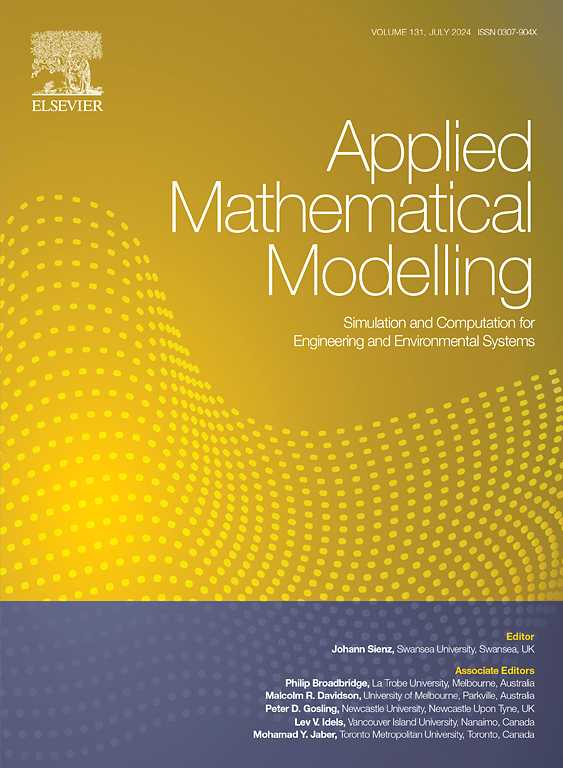Nonlinear vibration modeling and control of MRE grid composite sandwich plates
IF 4.4
2区 工程技术
Q1 ENGINEERING, MULTIDISCIPLINARY
引用次数: 0
Abstract
This paper presents a nonlinear vibration response analysis model for magnetorheological elastomer grid composite sandwich plates (MREGCSP), taking into account the nonlinear effects of magnetic field strength variations on the composite structure. The model is established base on the Jones-Nelson nonlinear theory, iterative computational methods, and the Wilson-θ method. Additionally, a nonlinear multi-region vibration active control strategy is proposed to actively control the nonlinear vibrations in MRE grid composite sandwich plates. To validate the correctness of the suggested nonlinear vibration response model and the effectiveness of the proposed control strategy, a testbed for active control of nonlinear vibrations in MREGCSP is constructed. The proposed model convincingly demonstrates its effectiveness and superiority by conducting a comprehensive comparison of diverse natural frequencies, loss factors, and vibration responses related to magnetic fields and vibration amplitudes. The research presented in this paper establishes a robust foundation for elucidating the nonlinear dynamic mechanism of the investigated intelligent structure subjected to complex excitation loads. Furthermore, practical recommendations can be derived to enhance the active vibration control capability of the composite structure.
求助全文
约1分钟内获得全文
求助全文
来源期刊

Applied Mathematical Modelling
数学-工程:综合
CiteScore
9.80
自引率
8.00%
发文量
508
审稿时长
43 days
期刊介绍:
Applied Mathematical Modelling focuses on research related to the mathematical modelling of engineering and environmental processes, manufacturing, and industrial systems. A significant emerging area of research activity involves multiphysics processes, and contributions in this area are particularly encouraged.
This influential publication covers a wide spectrum of subjects including heat transfer, fluid mechanics, CFD, and transport phenomena; solid mechanics and mechanics of metals; electromagnets and MHD; reliability modelling and system optimization; finite volume, finite element, and boundary element procedures; modelling of inventory, industrial, manufacturing and logistics systems for viable decision making; civil engineering systems and structures; mineral and energy resources; relevant software engineering issues associated with CAD and CAE; and materials and metallurgical engineering.
Applied Mathematical Modelling is primarily interested in papers developing increased insights into real-world problems through novel mathematical modelling, novel applications or a combination of these. Papers employing existing numerical techniques must demonstrate sufficient novelty in the solution of practical problems. Papers on fuzzy logic in decision-making or purely financial mathematics are normally not considered. Research on fractional differential equations, bifurcation, and numerical methods needs to include practical examples. Population dynamics must solve realistic scenarios. Papers in the area of logistics and business modelling should demonstrate meaningful managerial insight. Submissions with no real-world application will not be considered.
 求助内容:
求助内容: 应助结果提醒方式:
应助结果提醒方式:


